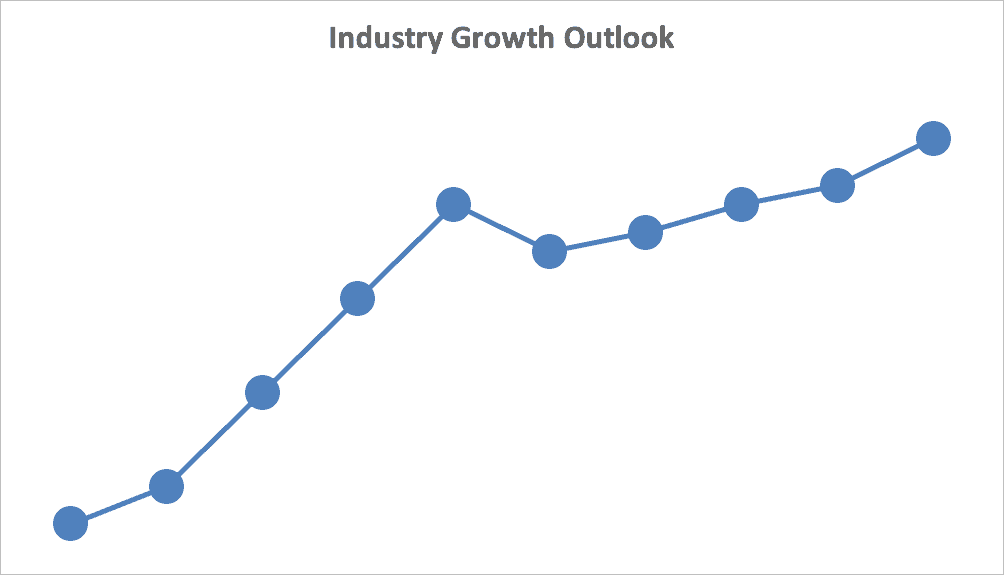Over the past 20+ years, we have helped over 10,000 entrepreneurs and business owners create business plans to start and grow their wineries. On this page, we will first give you some background information with regards to the importance of business planning. We will then go through awinery business plan template step-by-step so you can create your plan today.
What is a Winery Business Plan?
A business plan provides a snapshot of your winery as it stands today, and lays out your growth plan for the next five years. It explains your business goals and your strategy for reaching them. It also includes market research to support your plans.
Why You Need a Business Plan for a Winery
If you’re looking to start a winery, or grow your existing winery, you need a business plan. A business plan will help you raise funding, if needed, and plan out the growth of your winery in order to improve your chances of success. Your winery business plan is a living document that should be updated annually as your company grows and changes.
Sources of Funding for Wineries
With regards to funding, the main sources of funding for a winery are personal savings, credit cards, bank loans and angel investors. With regards to bank loans, banks will want to review your business plan and gain confidence that you will be able to repay your loan and interest. To acquire this confidence, the loan officer will not only want to confirm that your financials are reasonable. But they will want to see a professional plan. Such a plan will give them the confidence that you can successfully and professionally operate a business.
The second most common form of funding for a winery is angel investors. Angel investors are wealthy individuals who will write you a check. They will either take equity in return for their funding, or, like a bank, they will give you a loan. Venture capitalists will not fund a winery. They might consider funding a winery with a national presence, but never an individual location. This is because most venture capitalists are looking for millions of dollars in return when they make an investment, and an individual location could never achieve such results.
Finish Your Business Plan Today!
If you’d like to quickly and easily complete your business plan, download Growthink’s Ultimate Business Plan Template and complete your plan and financial model in hours.
How To Write a Business Plan for a Winery
If you want to start a winery or expand your current one, you need a business plan. Below are links to each section of your winery business plan template:
Executive Summary
Your executive summary provides an introduction to your business plan, but it is normally the last section you write because it provides a summary of each key section of your plan.
The goal of your Executive Summary is to quickly engage the reader. Explain to them the type of winery you are operating and the status; for example, are you a startup, do you have a winery that you would like to grow, or are you operating a network of wineries.
Next, provide an overview of each of the subsequent sections of your plan. For example, give a brief overview of the winery industry. Discuss the type of winery you are operating. Detail your direct competitors. Give an overview of your target customers. Provide a snapshot of your marketing plan. Identify the key members of your team. And offer an overview of your financial plan.
Company Analysis
In your company analysis, you will detail the type of winery you are operating.
For example, you might operate one of the following types of wineries:
- Vineyard wineries: these are traditional wineries with acres of land used to grow and harvest grapes for wine.
- Destination winery: this type of winery emphasizes location and experience and is typically situated in a scenic area.
- Urban wineries: an increasingly popular winery where grapes are shipped into an urban venue and wine is made in-house.
In addition to explaining the type of winery you will operate, the Company Analysis section of your business plan needs to provide background on the business.
Include answers to question such as:
- When and why did you start the business?
- What milestones have you achieved to date? Milestones could include placement goals you’ve reached, number of new contracts, etc.
- Your legal structure. Are you incorporated as an S-Corp? An LLC? A sole proprietorship? Explain your legal structure here.
Industry Analysis
In your industry analysis, you need to provide an overview of the winery business. 
While this may seem unnecessary, it serves multiple purposes.
First, researching the winery industry educates you. It helps you understand the market in which you are operating.
Secondly, market research can improve your strategy particularly if your research identifies market trends.
The third reason for market research is to prove to readers that you are an expert in your industry. By conducting the research and presenting it in your plan, you achieve just that.
The following questions should be answered in the industry analysis section of yourwinery business plan:
- How big is the winery industry (in dollars)?
- Is the market declining or increasing?
- Who are the key competitors in the market?
- Who are the key suppliers in the market?
- What trends are affecting the industry?
- What is the industry’s growth forecast over the next 5 – 10 years?
- What is the relevant market size? That is, how big is the potential market for your winery? You can extrapolate such a figure by assessing the size of the market in the entire country and then applying that figure to your local population.
Customer Analysis
The customer analysis section of yourwinery business plan must detail the customers you serve and/or expect to serve.
The following are examples of customer segments: professional women, college students, event planners, couples, and bridal parties.
As you can imagine, the customer segment(s) you choose will have a great impact on the type of winery you operate. Clearly college students would want different service options, and would respond to different marketing promotions than bridal parties, for example.
Try to break out your target customers in terms of their demographic and psychographic profiles. With regards to demographics, include a discussion of the ages, genders, locations and income levels of the customers you seek to serve. Because most wineries primarily serve customers living in their same city or town, such demographic information is easy to find on government websites.
Psychographic profiles explain the wants and needs of your target customers. The more you can understand and define these needs, the better you will do in attracting and retaining your customers.
Finish Your Winery Business Plan in 1 Day!
Don’t you wish there was a faster, easier way to finish your business plan?
With Growthink’s Ultimate Business Plan Template you can finish your plan in just 8 hours or less!
Click here to finish your Winery business plan today.
Competitive Analysis
Your competitive analysis should identify the indirect and direct competitors your business faces and then focus on the latter.
Direct competitors are other wineries.
Indirect competitors are other options that customers have to purchase from that aren’t direct competitors. This includes wine bars, liquor stores, and wine subscription services. You need to mention such competition to show you understand that not everyone interested in purchasing or tasting wine will go to a winery.
With regards to direct competition, you want to detail the other wineries with which you compete. Most likely, your direct competitors will be wineries located very close to your location.

For each such competitor, provide an overview of their businesses and document their strengths and weaknesses. Unless you once worked at your competitors’ businesses, it will be impossible to know everything about them. But you should be able to find out key things about them such as:
- What types of customers do they serve?
- What types of wine do they offer?
- What is their pricing (premium, low, etc.)?
- What are they good at?
- What are their weaknesses?
With regards to the last two questions, think about your answers from the customers’ perspective. And don’t be afraid to ask your competitors’ customers what they like most and least about them.
The final part of your competitive analysis section is to document your areas of competitive advantage. For example:
- Will you provide superior products?
- Will you provide products or services that your competitors don’t offer?
- Will you make it easier for customers to access your wine?
- Will you provide better customer service?
- Will you offer better pricing?
Think about ways you will outperform your competition and document them in this section of your plan.
Marketing Plan
Traditionally, a marketing plan includes the four P’s: Product, Price, Place, and Promotion. For awinery business plan, your marketing plan should include the following:
Product: in the product section you should reiterate the type of winery that you documented in your Company Analysis. Then, detail the specific products you will be offering. For example, in addition to a winery, will you provide catering, food menus, or special event services?
Price: Document the prices you will offer and how they compare to your competitors. Essentially in the product and price sub-sections of your marketing plan, you are presenting the products and services you offer and their prices.
Place: Place refers to the location of your winery. Document your location and mention how the location will impact your success. For example, is your winery located in a tourist-heavy area or is it near a busy retail district, etc. Discuss how your location might provide a steady stream of customers.
Promotions: the final part of your winery marketing plan is the promotions section. Here you will document how you will drive customers to your location(s). The following are some promotional methods you might consider:
- Advertising in local papers and magazines
- Reaching out to local websites
- Flyers
- Social media marketing
- Local radio advertising
Finish Your Business Plan Today!
If you’d like to quickly and easily complete your business plan, download Growthink’s Ultimate Business Plan Template and complete your plan and financial model in hours.
Operations Plan
While the earlier sections of your business plan explained your goals, your operations plan describes how you will meet them. Your operations plan should have two distinct sections as follows.
Everyday short-term processes include all of the tasks involved in running your winery, including all facets of the winemaking process, tank cleaning, tasting preparation, and logbook maintenance.
Long-term goals are the milestones you hope to achieve. These could include the dates when you expect to serve your 1,000th customer, or when you hope to reach $X in revenue. It could also be when you expect to grow your client database to X amount or launch in a new location.
Management Team
To demonstrate your winery’s ability to succeed as a business, a strong management team is essential. Highlight your key players’ backgrounds, emphasizing those skills and experiences that prove their ability to grow a company.
Ideally you and/or your team members have direct experience working in vineyards or with wine. If so, highlight this experience and expertise. But also highlight any experience that you think will help your business succeed.
If your team is lacking, consider assembling an advisory board. An advisory board would include 2 to 8 individuals who would act like mentors to your business. They would help answer questions and provide strategic guidance. If needed, look for advisory board members with experience in managing wineries or successfully running small businesses.
Financial Plan
Your financial plan should include your 5-year financial statement broken out both monthly or quarterly for the first year and then annually. Your financial statements include your income statement, balance sheet and cash flow statements.
Income Statement: an income statement is more commonly called a Profit and Loss statement or P&L. It shows your revenues and then subtracts your costs to show whether you turned a profit or not. 
In developing your income statement, you need to devise assumptions. For example, will you sell 50 bottles per day or 100? And will sales grow by 2% or 10% per year? As you can imagine, your choice of assumptions will greatly impact the financial forecasts for your business. As much as possible, conduct research to try to root your assumptions in reality.
Balance Sheets: Balance sheets show your assets and liabilities. While balance sheets can include much information, try to simplify them to the key items you need to know about. For instance, if you spend $100,000 on building out your winery, this will not give you immediate profits. Rather it is an asset that will hopefully help you generate profits for years to come. Likewise, if a bank writes you a check for $100.000, you don’t need to pay it back immediately. Rather, that is a liability you will pay back over time.
Cash Flow Statement: Your cash flow statement will help determine how much money you need to start or grow your business, and make sure you never run out of money. What most entrepreneurs and business owners don’t realize is that you can turn a profit but run out of money and go bankrupt. For example, let’s say a restaurant approached you with a $100,000 contract to provide wine for their wine list. Let’s further assume the contract would cost you $50,000 to fulfill. Well, in most cases, you would have to pay that $50,000 now for grapes/supplies, employee salaries, etc. But let’s say the company didn’t pay you for 180 days. During that 180-day period, you could run out of money. 
In developing your Income Statement and Balance Sheets be sure to include several of the key costs needed in starting or growing a winery business:
- Location build-out including design fees, construction, etc.
- Cost of equipment like cultivation equipment, fermentation tanks, and temperature control systems
- Payroll or salaries paid to staff
- Business insurance
- Taxes and permits
- Legal expenses
Appendix
Attach your full financial projections in the appendix of your plan along with any supporting documents that make your plan more compelling. For example, you might include your winery blueprint or location lease.
Summary
Putting together a business plan for your winery is a worthwhile endeavor. If you follow the template above, by the time you are done, you will truly be an expert. You will really understand the winery industry, your competition and your customers. You will have developed a marketing plan and will really understand what it takes to launch and grow a successful winery.
Winery Business Plan FAQs
What Is the Easiest Way to Complete My Winery Business Plan?
Growthink's Ultimate Business Plan Template allows you to quickly and easily complete your Winery Business Plan.
What Is the Goal of a Business Plan's Executive Summary?
The goal of your Executive Summary is to quickly engage the reader. Explain to them the type of winery you are operating and the status; for example, are you a startup, do you have a winery that you would like to grow, or are you operating a network of wineries.
Finish Your Winery Business Plan in 1 Day!
Don’t you wish there was a faster, easier way to finish your Winery business plan?
With Growthink’s Ultimate Business Plan Template you can finish your plan in just 8 hours or less!
Click here to finish your Winery business plan today.
OR, Let Us Develop Your Plan For You
Since 1999, Growthink has developed business plans for thousands of companies who have gone on to achieve tremendous success.
Click here to see how Growthink’s professional business plan consultants can create your business plan for you.


 Business Plan Template & Guide for Small Businesses
Business Plan Template & Guide for Small Businesses Bar Business Plan
Bar Business Plan Brewery Business Plan Template
Brewery Business Plan Template Micro Distillery Business Plan
Micro Distillery Business Plan Restaurant Business Plan
Restaurant Business Plan Catering Business Plan
Catering Business Plan